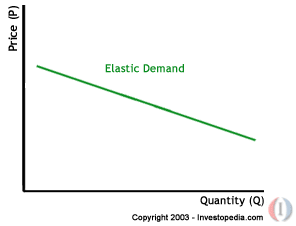
КАТЕГОРИИ:
Архитектура-(3434)Астрономия-(809)Биология-(7483)Биотехнологии-(1457)Военное дело-(14632)Высокие технологии-(1363)География-(913)Геология-(1438)Государство-(451)Демография-(1065)Дом-(47672)Журналистика и СМИ-(912)Изобретательство-(14524)Иностранные языки-(4268)Информатика-(17799)Искусство-(1338)История-(13644)Компьютеры-(11121)Косметика-(55)Кулинария-(373)Культура-(8427)Лингвистика-(374)Литература-(1642)Маркетинг-(23702)Математика-(16968)Машиностроение-(1700)Медицина-(12668)Менеджмент-(24684)Механика-(15423)Науковедение-(506)Образование-(11852)Охрана труда-(3308)Педагогика-(5571)Полиграфия-(1312)Политика-(7869)Право-(5454)Приборостроение-(1369)Программирование-(2801)Производство-(97182)Промышленность-(8706)Психология-(18388)Религия-(3217)Связь-(10668)Сельское хозяйство-(299)Социология-(6455)Спорт-(42831)Строительство-(4793)Торговля-(5050)Транспорт-(2929)Туризм-(1568)Физика-(3942)Философия-(17015)Финансы-(26596)Химия-(22929)Экология-(12095)Экономика-(9961)Электроника-(8441)Электротехника-(4623)Энергетика-(12629)Юриспруденция-(1492)Ядерная техника-(1748)
D. Elasticity of demand and supply
|
|
|
|

A very important concept in understanding supply and demand theory is elasticity. Robert Pindyck and Daniel Rubinfeld observed in their book “Microeconomics” that "the demand for a good depends on its price, as well as on consumer income and on the prices of other goods. Similarly, supply depends on price, as well as on variables that affect production cost…. Often, however, we want to know howmuch supply or demand will rise or fall." This measurement of a product or service's responsiveness to market changes is known as elasticity.Todd G. Buchholz, writing in his book “From Here to Economy”: “A Shortcut to Economic Literacy, used an example from the world of sports business to provide an example of economic elasticity: "Will football fans buy the same number of tickets if the team jacks up the prices? If they do, then demand is inelastic. If higher prices lead the fans to cut back their attendance, then demand is elastic, or sensitive to change."
There are three main factors that influence elasticity of supply and demand.
1.The availability of substitutes. This is probably the most important factor influencing the elasticity of a good or service. In general, the more substitutes, the more elastic the demand will be. For example, if the price of a cup of coffee went up by $0.25, consumers could replace their morning caffeine with a cup of tea. This means that coffee is an elastic good because a rise in price will cause a large decrease in demand as consumers start buying more tea instead of coffee.
However, if the price of caffeine were to go up as a whole, we would probably see little change in the consumption of coffee or tea because there are few substitutes for caffeine. Most people are not willing to give up their morning cup of caffeine no matter what the price. We would say, therefore, that caffeine is an inelastic product because of its lack of substitutes. Thus, while a product within an industry is elastic due to the availability of substitutes, the industry itself tends to be inelastic. Usually, unique goods such as diamonds are inelastic because they have few if any substitutes.
2.Amount of income available to spend on the good. This factor affecting demand elasticity refers to the total a person can spend on a particular good or service. Thus, if the price of a can of Coke goes up from $0.50 to $1 and income stays the same, the income that is available to spend on coke, which is $2, is now enough for only two rather than four cans of Coke. In other words, the consumer is forced to reduce his or her demand of Coke. Thus if there is an increase in price and no change in the amount of income available to spend on the good, there will be an elastic reaction in demand; demand will be sensitive to a change in price if there is no change in income.
3.Time. The third influential factor is time. If the price of cigarettes goes up $2 per pack, a smoker with very few available substitutes will most likely continue buying his or her daily cigarettes. This means that tobacco is inelastic because the change in price will not have a significant influence on the quantity demanded. However, if that smoker finds that he or she cannot afford to spend the extra $2 per day and begins to kick the habit over a period of time, the price elasticity of cigarettes for that consumer becomes elastic in the long run.
To determine the elasticity of the supply or demand curves, we can use this simple equation: Elasticity = (% change in quantity / % change in price).
It is a measure of relative changes. If elasticity is greater than or equal to one, the curve is considered to be elastic. If it is less than one, the curve is said to be inelastic.
Elasticity varies among products because some products may be more essential to the consumer. Products that are necessities are more insensitive to price changes because consumers would continue buying these products despite price increases. Conversely, a price increase of a good or service that is considered less of a necessity will deter more consumers because the opportunity cost of buying the product will become too high.
A good or service is considered to be highly elastic if a slight change in price leads to a sharp change in the quantity demanded or supplied. Usually these kinds of products are readily available in the market and a person may not necessarily need them in his or her daily life. On the other hand, an inelastic good or service is one in which changes in price witness only modest changes in the quantity demanded or supplied, if any at all. These goods tend to be things that are more of a necessity to the consumer in his or her daily life.
Language notes:
* The phrase "supply and demand" was first used by James Denham-Steuart in his Inquiry into the Principles of Political Economy, published in 1767. Adam Smith used the phrase in his 1776 book “The Wealth of Nations”, and David Ricardo titled one chapter of his 1817 work “Principles of Political Economy and Taxation” as "On the Influence of Demand and Supply on Price";
Weigh heavily – мати велике значення;
the best combination of goods possible – найкращий вибір товарів;
the higher …, the lower …– чим вищий,… тим нижчий;
an upward slope – крива, спрямована вгору.
|
|
|
|
|
Дата добавления: 2014-11-29; Просмотров: 719; Нарушение авторских прав?; Мы поможем в написании вашей работы!